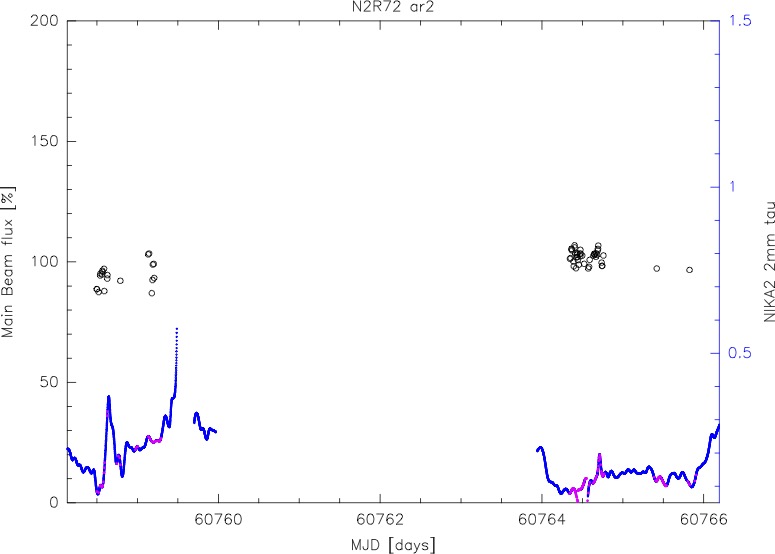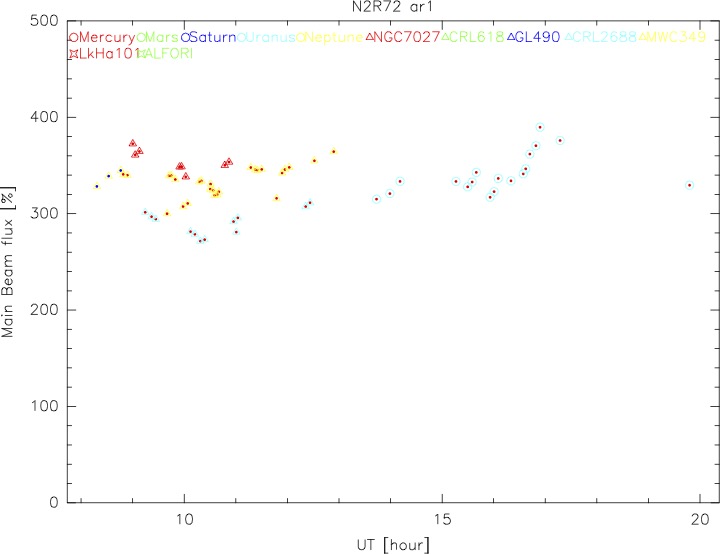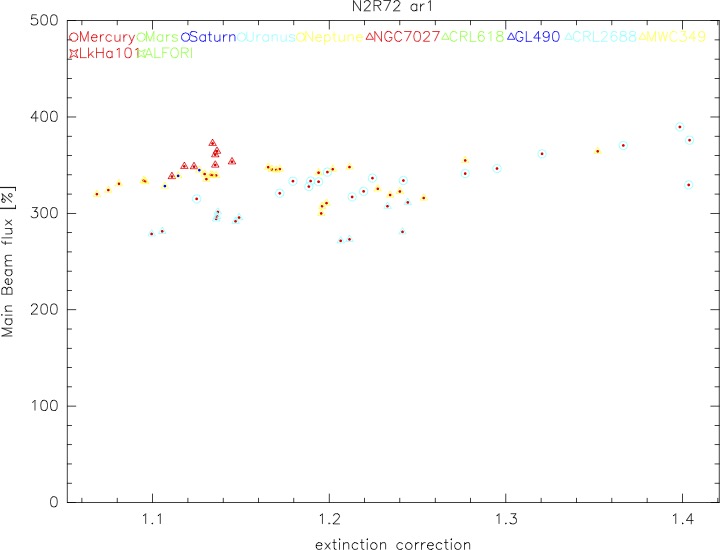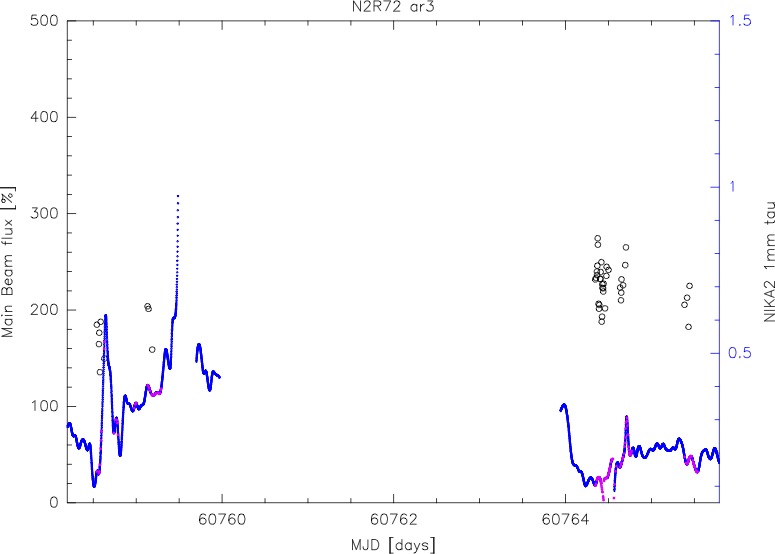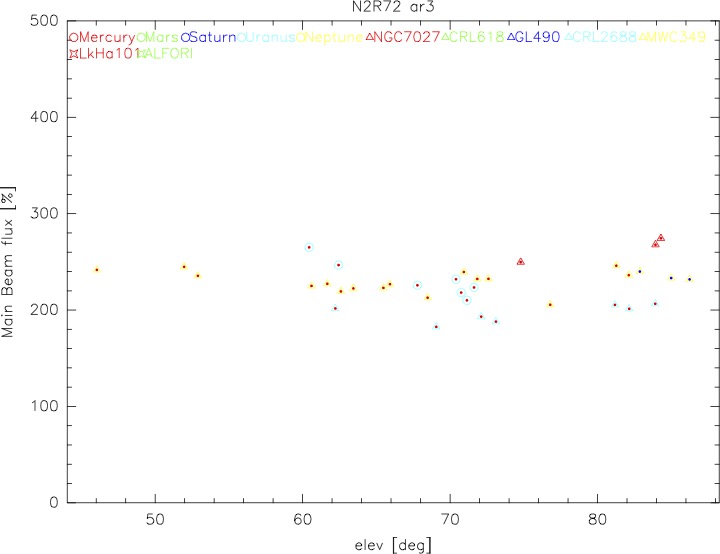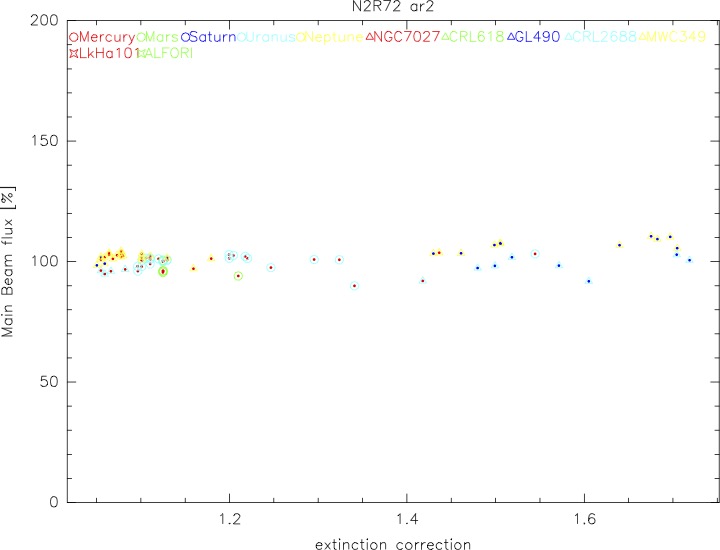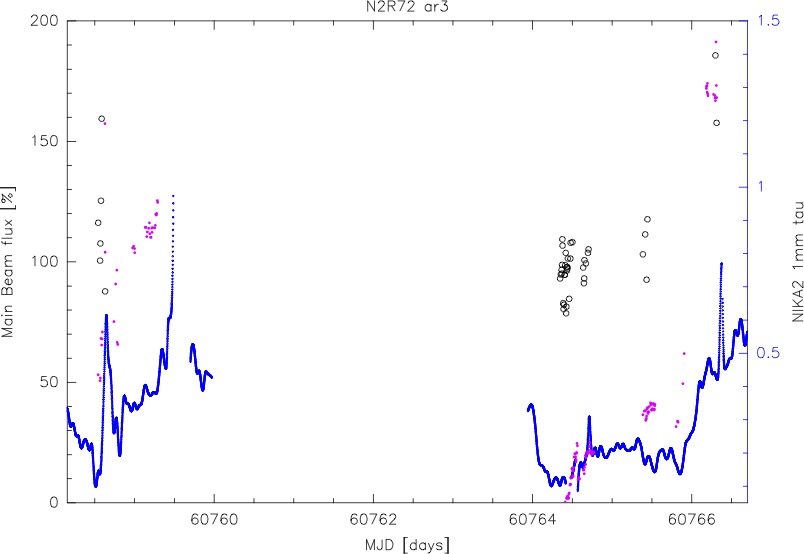Back to the main NIKA2 run 72 page
Contents
Data reduction of run 72 (re-commissioning) and results
To be progressively updated, when the re-commissioning data are being analyzed.
PIIC data reduction
Beam maps new analysis
This new analysis of the beam maps extends what was done during the re-commissioning weeks (see the daily reports) Remeber that Box C of Ar2 is noisy and therefore mostof its KIDs are rejected, including the reference KID KC016. Therefore I am using KID KB013 as reference. Hence this same KID has been used as pointing KID during the observations. All pointing offsets were refereed to this KID. All maps are cenetred on this KID, although it is off-axis, and therefore all maps are slightly shifted (one-two 2mm beams) with respect to the geometrical/optical center of the f.o.v.
Available Beam maps |
|||
Scan |
Target |
Comments |
Analyzed? |
20250324s23 |
2251+158 |
decent |
yes |
20250324s37 |
2251+158 |
terrible |
Excluded |
20250324s58 |
Uranus |
ok |
yes |
20250330s301 |
1253-055 = 3C279 |
focused on Ar2 (and Ar1) |
yes |
20250330s314 |
1253-055 = 3C279 |
focused on Ar3 |
yes |
20250331s8 |
1253-055 = 3C279 |
focused on Ar2 + 0.25 mm |
yes |
20250331s10 |
1253-055 = 3C279 |
focused on Ar2 - 0.25 mm |
yes |
20250331s12 |
1253-055 = 3C279 |
focused on Ar2 + 0.50 mm |
yes |
20250331s14 |
1253-055 = 3C279 |
focused on Ar2 - 0.50 mm |
yes |
20250331s74 |
1641+399 = 3C345 |
polarimetry beam map |
no |
The best beam maps, that I combined together to produce the DAF RPPs are:
Array |
best beams maps (used and combined in the RPPs) |
Ar2 |
20250324s23, 20250324s58, 20250330s301 |
Ar1 |
20250324s23, 20250324s58 |
Ar3 |
20250324s23, 20250330s314, 20250331s8 |
Comparison of analyzed the beam maps: PDF file
Comparison of FWHM for each KID, array and beam map:

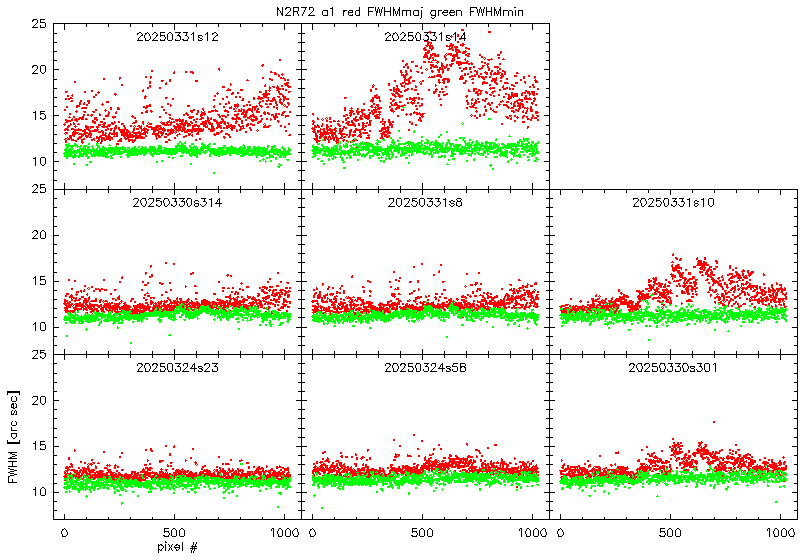
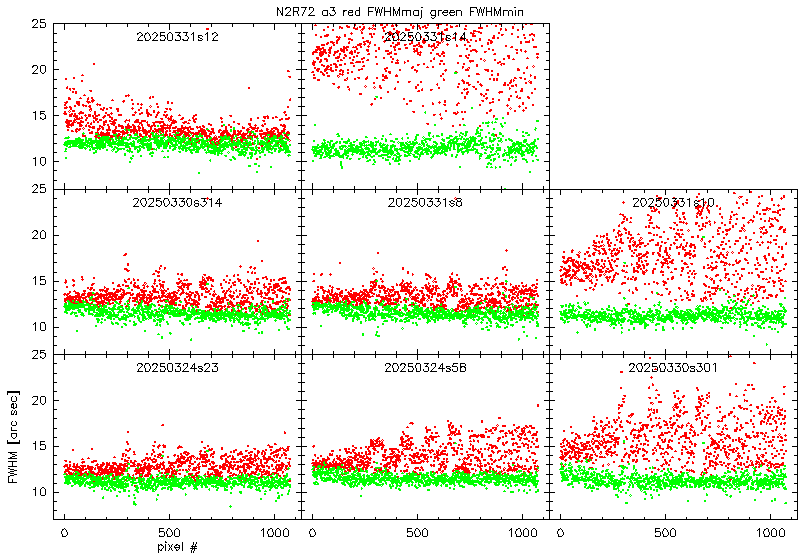
Calibration analysis
During the re-commissioning days, we took a total of more than 150 pointing and calib1_scan scand on primary and secondary calibrators. I used them to study the statistics of calibration and derive the calibration factors of the new Ar1 and Ar3. Below here, I post a series of diagrams, showing the fraction of calibrators flux retrieved, using the old calibration factor and the newly determined calibration factors.
In PIIC, when calibrating, the data are divided by the so-called calibration factor. The new Ar1 and Ar3 turn out to be much more sensitive than the old ones. The calibration factor of the new Ar1 is a factor ~3.3 larger than the one of the old array. The calibration factor of the new Ar3 is a factor ~2.3 larger than the one of the old array.
Some details about the reference fluxes of the calibrators. PIIC does not make use of passbands. It uses the effective frequency of the band. The intrinsic flux of the given calibrator is retrieved calling GILDAS/ASTRO. The version of ASTRO used by PIIC adopts the Planets models named "legacy". In this version, a spectral index of -0.35 was used for Venus, Uranus and Neptune. The reference brightness temperatures were taken at 100GHz and were 350, 132 and 125 K for Venus, Uranus and Neptune, respectively. I don't have the details about secondary calibrators, but they can be asked (or can be digged in the ASTRO code), if needed in the future.
The changes of calibration factor mentioned above, and the plots shown below, have been obtained keeping 260 GHz as effective frequency, so to ease the comparison with the old Arrays Ar1 and Ar3. Once we have the final passbands derived from the analysis of the PIMP data, we can compute the new effective frequencies (it's just int(nu*T(nu)dnu)/int(T(nu)dnu)) and see where it goes.
The Ar1 and Ar3 statistics are very noisy (more than usual). In my opinion, this highlights the need to have very high quality data, in order to perform this kind of analysis. Note that several scans were taken either in sub-optimal sky conditions (large extinction correction) or during the warmest hours of the day, when the telescope was subject to strong thermal distorsions. Consequently the beams were larger than usual and distorted, which might have caused losses of main beam flux. Finally, this "noisy statistics" might indicate that the new Ar1 & Ar3 arrays are not only much more sensitive that the old ones, but also more easily affected by sky/telescope instabilities.
Results using the old calibration factors:
Flux fraction vs. MJD, UT, Elevation, and extinction correction,
for Ar2, Ar1 and Ar3.
Results using the new calibration factors, and applying the sky-load to tau equation (DAFs NKSLEX, see PIIC calibration documentation):
Flux fraction vs. MJD, UT, Elevation, and extinction correction,
for Ar2, Ar1 and Ar3.
IDL data reduction
NEFD analysis
(FXD, NP, JMP) With the IDL pipeline, we were able to perform an absolute calibration on Uranus (beammap), using skydips for opacity corrections. Everything is done without box C (2mm) and S (on A3). We then reduced all calib_1scan on MWC349. The best NEFD (on sky, not corrected for opacity) are found when the opacity was low. For example, scan 20250330s112 (opacity of 0.1 at 1mm) gives NEFD of A1: 18, A3:25, 1mm:16, 2mm:11 mJy s1/2 which is twice better at 1mm than NIKA2 standard. The beammap was done with A1, A2 focused. so to be fair to A3, we need to consider the gain obtained when focused (e.g. scan 20250330s113) which is 17%, so A3 is potentially at 21 mJy s1/2 when focussed. All these results are preliminary. The fluxes have not been corrected by the bandpass. They should not if we agree to keep the 260GHz monochromatic calibration on Uranus (as I think we should). They should if we want to find the real fluxes of MWC349. All_Calib1scan_MWC349_N2R72.pdf

